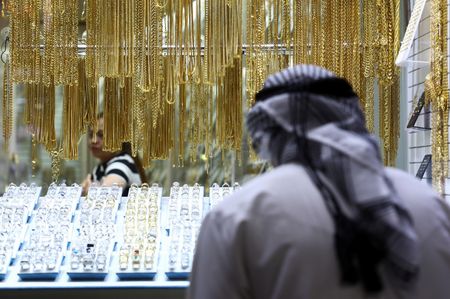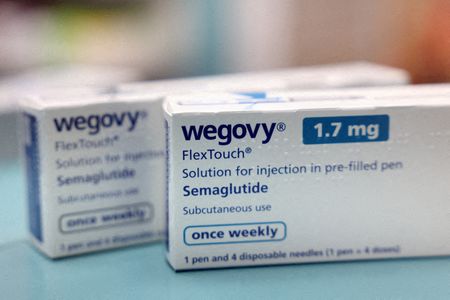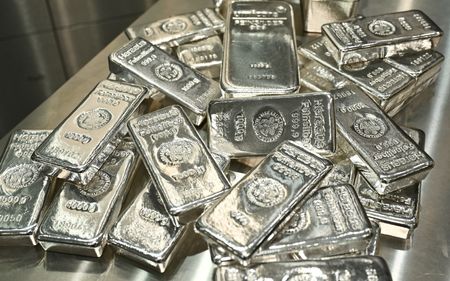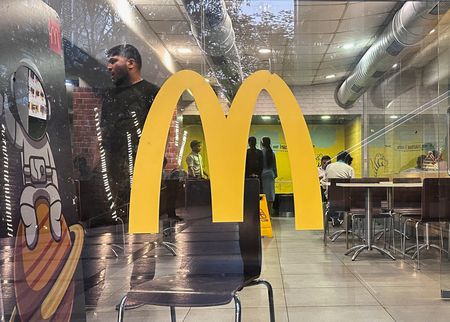By Sherin Elizabeth Varghese and Ashitha Shivaprasad
(Reuters) -Gold prices fell on Wednesday after a U.S.-Japan trade deal eased market uncertainty, while strong industrial demand and a supply shortage drove silver to its highest level since September 2011.
Spot gold was down 0.6% at $3,412.03 per ounce, as of 1351 GMT, after hitting its highest point since June 16 earlier in the session.
U.S. gold futures also slipped 0.7% to $3,421.50.
“Trade deals like the one between the U.S. and Japan mitigate macroeconomic concerns and may dampen safe haven demand. This could lead to a continuation of the recent push and pull in (gold) prices,” said Nikos Tzabouras, senior market analyst at Tradu.com.
U.S. President Donald Trump struck a trade deal with Japan on Wednesday that lowers auto tariffs, marking the most significant agreement his administration has negotiated since announcing the tariffs in April.
However, the longer-term prospects for gold remain favourable, Tzabouras added.
“Dollar weakness could persist amid mounting concerns over the Fed’s independence and worries over the U.S. debt. This could exacerbate the dedollarisation trends and lead to higher gold holdings by central banks.”
Bullion tends to thrive in periods of uncertainty and also in low-interest-rate environments because the opportunity cost of holding a non-yielding asset is reduced.
The markets do not expect an interest rate cut from the U.S. Federal Reserve in July, but the Fed’s independence appears under threat from mounting political interference, according to a clear majority of economists polled by Reuters.
Among other metals, spot silver rose 0.2% to $39.35 per ounce, a near 14-year peak.
“The recent rally in silver is being driven by a combination of strong industrial demand, persistent supply deficits, and increased investor interest,” said Alexander Zumpfe, a precious metals trader at Heraeus Metals Germany.
“A decisive push past $40 could come from a further breakout in gold prices, renewed weakness in the U.S. dollar, or signs of deeper supply tightness – especially if physical premiums start to rise again in key Asian markets.”
Platinum fell 1.4% to $1,420.92 and palladium was down 0.4% at $1,269.60.
(Reporting by Sherin Elizabeth Varghese, Ashitha Shivaprasad and Anushree Mukherjee in Bengaluru)











